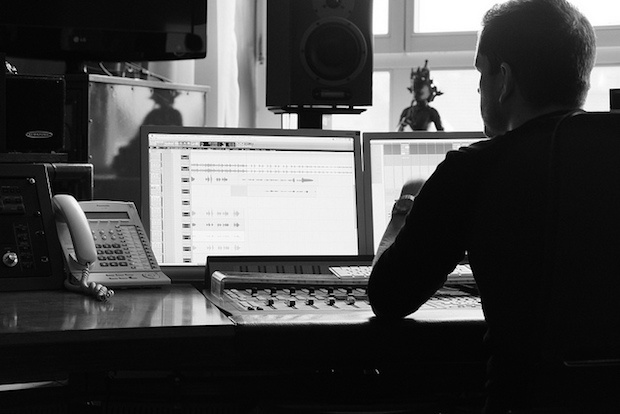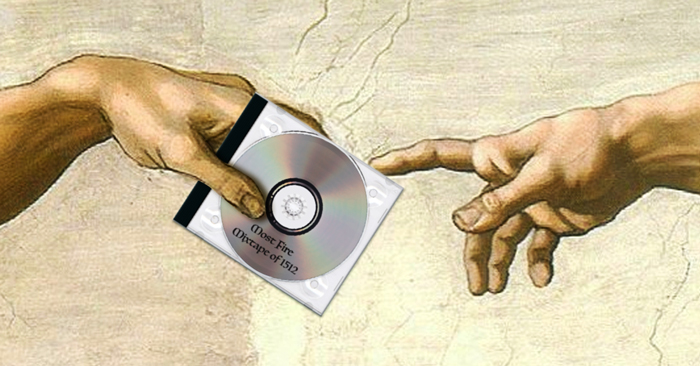 Photo by Martin Krolikowski via Flickr / CC BY 2.0
Photo by Martin Krolikowski via Flickr / CC BY 2.0
A version of this article originally appeared on Landr.
Get educated and format your music right.
Which audio format is best? It’s a common question I’m sure you’ve asked yourself before. I know I have. The answer is simple: it all depends on what your needs are.
If you’re learning how to promote your music, you need to know which format is best for what. So to help you pick the best format for your music, here’s everything you need to know about audio formats and, more importantly, what the best use is for each type.
Compression: first impressions
Understanding file formats is all about compression. I don’t mean the kind of compression you put on a track in your DAW software. I’m talking about file compression. Compression makes a file smaller to save space and time when streaming, downloading, or storing.
But what happens when you compress?
There are three types of file compression: uncompressed (I know you’re banging your desk right now saying, "Uncompressed isn’t a type of compression," but I put it here ’cause it makes everything a bit more clear, trust me), lossless, and lossy.
Uncompressed and lossless files keep the original data intact. But lossy compression removes data from the original to decrease the size of the file. So the more compressed a lossy file is, the more original data that’s taken away.
Compressing with lossy doesn’t mean your entire drum track is going to get erased. It just takes away audio the ear usually can’t hear. Maybe only dogs can hear it?
Anyway, if you really wanna know what’s taken away when you compress, listen to what’s lost when you convert to MP3.
Understanding compression types
Here’s an easy way to understand each type of compression:
- An uncompressed file is an exact copy of the original. There’s no data lost at all. Think of uncompressed files like the original painting.
- Lossless files are compressed for slightly smaller files sizes, but they keep the original data intact. A lossless file is the same as the original painting, except it’s folded up until you want to look at it.
- Lossy files are the most compressed. Some of the original data is shaved off during compression. Lossy files are smaller versions of the original: the picture is there, but some of the details are gone.
 Image via blog.landr.com
Image via blog.landr.com
So now that you understand what compression is, you’re probably wondering how each file type is compressed. Don’t worry. I’ll explain.
How each file type is compressed
Uncompressed formats
Uncompressed files aren’t compressed at all (obviously). The most common uncompressed formats are WAV and AIFF. These are what you typically export from your DAW. If you duplicate a track to WAV format, it’s an exact, uncompressed copy of the original.
Lossless formats
Lossless files are compressed. But even though they are compressed, they preserve the original just like a WAV. They just get unpacked when they’re opened.
The most common lossless format is FLAC. Apple also has its own lossless format called ALAC if you’re dealing with iTunes. FLAC makes the file size smaller than a WAV while preserving the original data. But the file sizes still tend to be very big.
Lossy formats
Lossy files are the most common audio format. The most used lossy format is MP3. But other file types include OGG, WMA, and AAC.
The downside of lossy compression is that it actually subtracts some of the original data, but the benefit is that they're smaller, load quicker, and take up less space.
Files in the lossy format can be hi-res or lo-res depending on how much they're compressed. The higher the quality, the less data that’s taken away.
The truth about bitrates
The quality of an audio file is determined by its bitrate. The bitrate refers to how much data is processed per second. That’s what the 320 and 192 mean on MP3 files.
So an MP3 with a 320 bitrate has 320 kilobits of audio data per second, or kbps for short. Uncompressed WAVs and AIFF files are normally 1411 kbps. Bigger bitrates mean more data per second. More data per second means better sound. Pretty simple, right?
So now you understand the basics of compression, file types, and bitrate. Let’s continue. Now comes that burning question…
What's the best use for each format?
If I covered every single audio format, we’d be here for hours. I’m sure you have places to be and music to produce, right? So I’ll make it quick and simple. Here’s what each of the three most common formats are best for. That means WAV, 320 MP3, and 192 MP3.
The WAV
WAVs are the top of the pyramid. They’re the Cadillac of audio formats. A WAV gives you sound that is clean and crisp compared to other compressed formats.
If you’re sharing demos with a label, pitching to a publisher, or sending music to a media outlet like a blog, you need a mastered WAV.

Image via blog.landr.com
A WAV ensures that your best possible sound is representing you. When you’re mastering music, always use WAV as your input format. WAVs can be converted to all other formats as well, so a WAV has you covered for all your formatting needs later on.
The only downside to WAVs is the large file sizes. They eat up a lot of hard drive space. That means your computer, phone, iPod, or Dropbox will fill up pretty quick if you only use WAVs.
But when it comes to your own music, you need to have an archived WAV backup of all your tracks. Most sharing platforms require WAVs when uploading music for distribution. For example: iTunes and Amazon MP3 both require high-quality WAV uploads for their services.
The 320 MP3
The 320 kbps MP3 is the most common file type. And there’s a reason why. The 320 MP3 gives you the best of both worlds. They’re compressed for manageable file size. But they also give you nice, rich sound for playback.
If you’re streaming online, chances are it’s in 320. For example: everything streamed in high quality on Spotify is 320 kbps. The 320 MP3 is great for sharing your best possible sound while saving valuable hard drive space and load time.
The 192 MP3
A 192 kbps MP3 is your work horse. They’re quick and dirty MP3s when you need something fast and easy to share. They’re great for transferring a ton of files at once, previewing your entire back catalog, or quickly referencing and sharing tracks.
The lower bitrate causes more degradation than a 320 kbps lossy MP3, but the difference is often hard to tell. Take this test and see if you can tell the difference.
The 192 MP3 is a perfect utility for musicians in need of fast and efficient sharing or streaming of their music.
Hot tip: If you’re using your own streaming player on your project’s website, using a 192 kbps MP3 will give your page a better load time.
No format left behind
Every format has its uses. Choosing the right format is all about context. So think about what sound you’re sharing and where you’re sharing it. Does the format fit?
Audio mastering to WAV is the best bet for all your sharing needs. Once you have a mastered WAV, converting to every other format is a breeze.
Formats are important in the age of streaming. So choose wisely and format smart.
Scott Parsons is a full-time music enthusiast and semi-professional pinball player. Editor at LANDR.







